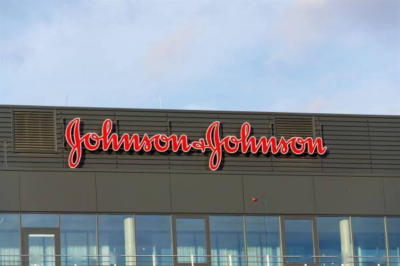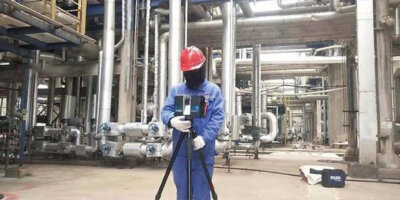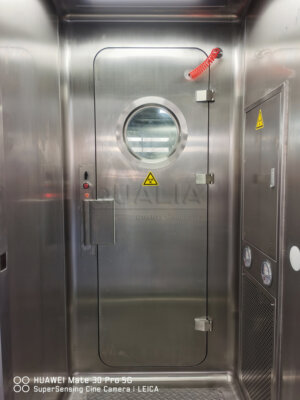In an era where biological and chemical hazards pose significant risks, decontamination solutions have become indispensable tools in our arsenal against contamination. These powerful formulations play a crucial role in maintaining safety across various sectors, from healthcare facilities to industrial sites. Decontamination solutions are designed to neutralize, remove, or destroy harmful substances, ensuring a clean and safe environment for both people and equipment.
The importance of effective decontamination cannot be overstated. Whether it's sterilizing medical instruments, cleaning up hazardous spills, or preparing surfaces for further use, decontamination solutions are at the forefront of our defense against pathogens and toxic materials. This article will delve into the world of decontamination solutions, exploring their types, applications, and the science behind their effectiveness.
As we navigate through the complexities of decontamination, we'll uncover the critical role these solutions play in various industries. From the stringent requirements of biosafety laboratories to the everyday needs of hospitals and emergency response teams, decontamination solutions are versatile tools that adapt to diverse challenges. We'll examine how these solutions work, their composition, and the best practices for their use.
Decontamination solutions are specialized chemical formulations designed to eliminate or neutralize harmful biological, chemical, or radiological contaminants from surfaces, equipment, or environments.
Types of Decontamination Solutions
| Type | Primary Use | Examples |
|---|---|---|
| Chemical | Neutralizing specific contaminants | Bleach, Hydrogen Peroxide |
| Biological | Eliminating microorganisms | Alcohol-based solutions, Quaternary ammonium compounds |
| Physical | Removing contaminants mechanically | Soap and water, Abrasive cleaners |
| Radiological | Removing radioactive particles | Chelating agents, Surfactants |
What are the main types of decontamination solutions?
Decontamination solutions come in various forms, each tailored to address specific types of contaminants. The choice of solution depends on the nature of the hazard, the surface or material being treated, and the level of decontamination required.
Chemical decontaminants are often used for neutralizing toxic substances, while biological decontaminants target microorganisms. Physical solutions focus on mechanical removal, and radiological decontaminants are specialized for handling radioactive materials.
Understanding the different types of decontamination solutions is crucial for ensuring effective and safe decontamination processes. Each type has its strengths and limitations, and selecting the right solution can mean the difference between successful decontamination and potential exposure to hazardous materials.
Chemical decontamination solutions, such as bleach or hydrogen peroxide, are highly effective against a wide range of contaminants but may be corrosive to certain materials if not used properly.
| Decontaminant Type | Effectiveness | Safety Considerations |
|---|---|---|
| Chemical | High for specific contaminants | May be corrosive or toxic |
| Biological | Broad-spectrum antimicrobial | Generally safe for surfaces |
| Physical | Removes visible contamination | Safe but may be labor-intensive |
| Radiological | Specific to radioactive materials | Requires specialized handling |
How do decontamination solutions work?
The mechanisms by which decontamination solutions function are as diverse as the contaminants they target. At their core, these solutions work by either destroying harmful agents, rendering them inactive, or physically removing them from surfaces.
For chemical decontaminants, the process often involves a reaction that breaks down or neutralizes the hazardous substance. Biological decontaminants, on the other hand, typically disrupt cellular structures or metabolic processes of microorganisms, effectively killing or inactivating them.
Physical decontamination solutions rely on surfactants and mechanical action to dislodge and remove contaminants. In the case of radiological decontamination, solutions are designed to bind to radioactive particles, allowing them to be washed away or absorbed for safe disposal.
Biological decontamination solutions, such as alcohol-based disinfectants, work by denaturing proteins and disrupting cell membranes of microorganisms, leading to their rapid destruction.
| Mechanism | Target | Example Solution |
|---|---|---|
| Oxidation | Organic contaminants | Hydrogen peroxide |
| Protein denaturation | Microorganisms | Alcohols |
| pH alteration | Acid/base sensitive agents | Sodium hypochlorite |
| Chelation | Heavy metals | EDTA solutions |
What factors influence the effectiveness of decontamination solutions?
The efficacy of decontamination solutions is not a one-size-fits-all scenario. Several factors play crucial roles in determining how well a solution will perform in a given situation.
Concentration is a primary factor, as solutions must be prepared at the correct strength to be effective without causing damage to surfaces or posing unnecessary risks to users. Contact time is equally important; many decontaminants require a specific duration of exposure to fully neutralize or remove contaminants.
Environmental conditions such as temperature and humidity can also impact effectiveness. Some solutions work best at room temperature, while others may require elevated temperatures for optimal performance. The presence of organic matter or other interfering substances can reduce the efficacy of certain decontaminants, necessitating pre-cleaning steps in some cases.
The effectiveness of quaternary ammonium compounds as decontamination solutions can be significantly reduced in the presence of hard water or organic soil, highlighting the importance of proper surface preparation.
| Factor | Impact on Effectiveness | Consideration |
|---|---|---|
| Concentration | Directly proportional | Must balance efficacy with safety |
| Contact Time | Critical for complete action | Varies by solution and contaminant |
| Temperature | Can enhance or inhibit activity | Optimal range specific to solution |
| pH | Affects chemical reactions | May need adjustment for some solutions |
What are the safety considerations when using decontamination solutions?
While decontamination solutions are essential for maintaining safe environments, they can pose risks if not handled properly. Safety considerations are paramount when working with these often potent chemicals.
Personal protective equipment (PPE) is a critical component of safe decontamination practices. Depending on the solution and application, this may include gloves, eye protection, respiratory protection, and protective clothing. Proper training in the handling and use of decontamination solutions is essential for all personnel involved in decontamination procedures.
Ventilation is another important factor, especially when working with volatile or aerosolized solutions. Adequate air exchange helps prevent the buildup of potentially harmful fumes. Storage and disposal of decontamination solutions must also be carefully managed to prevent accidental exposure or environmental contamination.
Improper use of strong oxidizing agents as decontamination solutions can lead to chemical burns or respiratory irritation, emphasizing the need for proper training and PPE.
| Safety Measure | Purpose | Example |
|---|---|---|
| PPE | Prevent direct contact | Chemical-resistant gloves |
| Ventilation | Reduce inhalation risks | Fume hoods or outdoor use |
| Training | Ensure proper handling | Hazardous materials courses |
| Storage | Prevent accidental exposure | Locked cabinets, proper labeling |
How are decontamination solutions applied in different industries?
Decontamination solutions find applications across a wide range of industries, each with its unique requirements and challenges. In healthcare settings, these solutions are crucial for preventing the spread of infections and maintaining sterile environments.
The pharmaceutical industry relies heavily on decontamination solutions to ensure the purity of products and the cleanliness of manufacturing facilities. In research laboratories, particularly those dealing with hazardous biological agents, decontamination is an everyday necessity to maintain biosafety levels.
Emergency response teams use decontamination solutions in the field to manage chemical spills or biological hazards. The food industry employs these solutions to maintain hygiene standards and prevent foodborne illnesses. Even in agriculture, decontamination plays a role in controlling plant diseases and maintaining biosecurity.
In biosafety level 3 and 4 laboratories, specialized decontamination solutions are used in conjunction with Effluent Decontamination Systems (EDS) for BSL-2, 3, and 4 Liquid Waste to ensure complete inactivation of highly pathogenic organisms before waste disposal.
| Industry | Common Application | Typical Solution |
|---|---|---|
| Healthcare | Surface disinfection | Quaternary ammonium compounds |
| Pharmaceuticals | Equipment sterilization | Vaporized hydrogen peroxide |
| Emergency Response | Chemical spill cleanup | Neutralizing agents |
| Food Production | Sanitizing food contact surfaces | Chlorine-based solutions |
What innovations are shaping the future of decontamination solutions?
The field of decontamination is constantly evolving, with new technologies and formulations emerging to meet the challenges of an ever-changing landscape of threats. Innovations in nanotechnology are leading to more effective and targeted decontamination solutions that can neutralize specific contaminants at the molecular level.
Environmentally friendly or "green" decontamination solutions are gaining traction as concerns about the environmental impact of traditional chemicals grow. These eco-friendly alternatives aim to provide effective decontamination while minimizing harmful residues and reducing the carbon footprint of decontamination processes.
Automation and robotics are also playing an increasing role in decontamination. Automated systems can apply solutions more consistently and access hard-to-reach areas, improving overall effectiveness and reducing human exposure to hazardous materials.
Advanced oxidation processes using nanoparticle-enhanced decontamination solutions have shown promise in rapidly degrading persistent organic pollutants, offering a more efficient alternative to traditional methods.
| Innovation | Benefit | Potential Application |
|---|---|---|
| Nanotech Solutions | Targeted contaminant removal | Precision decontamination |
| Green Formulations | Reduced environmental impact | Eco-sensitive areas |
| Automated Systems | Consistent application | Large-scale decontamination |
| Smart Sensors | Real-time efficacy monitoring | Quality assurance in critical environments |
How do regulations impact the use of decontamination solutions?
The use of decontamination solutions is subject to a complex web of regulations designed to ensure safety, efficacy, and environmental protection. These regulations vary by country and industry but generally cover aspects such as approved chemical compounds, application methods, and disposal procedures.
In the United States, agencies like the Environmental Protection Agency (EPA) and the Occupational Safety and Health Administration (OSHA) play key roles in regulating decontamination solutions. The EPA, for instance, registers disinfectants and other antimicrobial products, ensuring they meet specific standards before they can be marketed for use.
International standards, such as those set by the World Health Organization (WHO) or the International Organization for Standardization (ISO), also influence the development and use of decontamination solutions globally. Compliance with these regulations is crucial for manufacturers and users alike to ensure the safety and effectiveness of decontamination processes.
The EPA's List N provides a comprehensive inventory of disinfectants approved for use against SARS-CoV-2, highlighting the regulatory role in guiding the selection of appropriate decontamination solutions during public health emergencies.
| Regulatory Body | Area of Focus | Impact on Decontamination |
|---|---|---|
| EPA | Environmental safety | Approval of chemical formulations |
| OSHA | Worker safety | Guidelines for handling and PPE |
| FDA | Medical applications | Sterilant and disinfectant approval |
| ISO | International standards | Standardization of testing methods |
In conclusion, decontamination solutions are essential tools in our ongoing efforts to maintain safe and clean environments across various sectors. From hospitals to industrial sites, these powerful formulations play a critical role in neutralizing hazards and preventing the spread of harmful substances. As we've explored, the world of decontamination solutions is diverse and complex, with each type of solution designed to address specific challenges.
The effectiveness of these solutions depends on a multitude of factors, from proper concentration and application to environmental conditions and the nature of the contaminants being targeted. Safety considerations are paramount, requiring proper training, equipment, and adherence to regulations to ensure that those using decontamination solutions are protected from potential harm.
Looking to the future, innovations in nanotechnology, green chemistry, and automation promise to enhance the efficacy and sustainability of decontamination processes. These advancements, coupled with evolving regulations and standards, will continue to shape the landscape of decontamination solutions, ensuring that we are better equipped to face emerging threats and maintain the highest levels of safety and cleanliness.
As our understanding of contaminants and decontamination processes grows, so too will the sophistication of the solutions we use to combat them. The field of decontamination remains a critical area of research and development, underscoring its importance in safeguarding public health, environmental integrity, and industrial safety. By staying informed about the latest developments and best practices in decontamination, we can all contribute to creating safer, cleaner spaces for work, research, and daily life.
External Resources
Decontamination – Wikipedia – This article provides a comprehensive overview of decontamination, including its definition, methods (such as physical cleaning, disinfection, and sterilization), and applications in various fields like medical environments and environmental science.
Chapter 7: Decontamination and Sterilization | Office of Research – This resource details the definitions and methods of decontamination, including sterilization, disinfection, and antisepsis, with a focus on biological safety practices in laboratory settings.
Defining the Decontamination Process: Cleaning & Disinfection – This article explains the decontamination process in healthcare, emphasizing the steps of cleaning and disinfection, and the different levels of disinfection.
Biosafety: Decontamination Methods for Laboratory Use – UCSD Blink – This resource outlines various decontamination methods used in laboratory settings, including heat sterilization, liquid disinfection, and the use of vapors and gases.
Equipment Decontamination | FEMA.gov – This page discusses decontamination methods for equipment, focusing on physical removal, chemical detoxification, and the combination of both, particularly in the context of chemical incidents.
Decontamination and Sterilization – Although not directly titled "decontamination solution," this CDC resource provides detailed guidelines on disinfection and sterilization, which are crucial components of the decontamination process.
Decontamination Solutions for Chemical and Biological Agents – This link leads to a topic page on ScienceDirect that discusses various decontamination solutions specifically for chemical and biological agents, including their composition and effectiveness.
Decontamination Solutions and Methods – The EPA provides information on decontamination solutions and methods, particularly in the context of emergency response and environmental remediation, highlighting safe and effective practices.
Related Contents:
- Decontamination Systems: Safeguarding Health and Environment
- Water Decontamination: Essential Methods for Clean, Safe Water
- Decontamination Cleaning: Ensuring Safety Through Thorough Sanitization
- Effluent Decontamination: Safeguarding Our Environment
- Effluent Decontamination: Ensuring Pharmaceutical Safety
- Effluent Decontamination: Essential for High-Risk Labs
- Effluent Decontamination Systems: Safeguarding Malaysia’s Environment
- Effluent Decontamination Systems: Safeguarding Labs and Beyond
- Effluent Decontamination Systems for Biosafety Laboratories






























